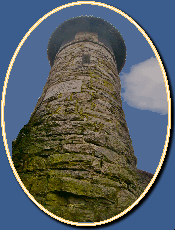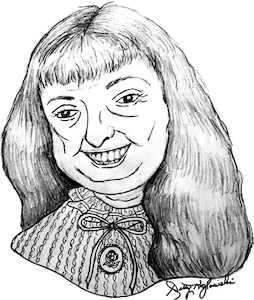The life of George Judson Smith is a window into the post-Civil War through the post-WWII eras and an American success story. It is also a story of Milford chronicled by himself in a few typewritten pages.
George was born in the third home sited on the land of Widow Martha Beard, whose husband died during the crossing from England to Massachusetts.
George’s great, great grandfather - Deacon John Smith - married the widow Beard’s granddaughter securing the site in the Smith’s name, which continues to this day at 171 Broad Street, now the Coldwell Banker office.
The house was a small one, built in 1841 by George’s father,Thaddeus. It was intended to be an adequate “cage for his bird,” his wife, an unrelated Smith, whom he married in 1842 at the First Church.
George was born there, the fifth of five children, the first three of whom died of illness. He would be a dedicated Christian and life-long Congregant of the First Church.
At age six he was deemed old enough for school, which was held across the Milford Green at the corner of Center and Broad in the home occupied by teacher, Anne Baird. Miss Baird’s students. both boys and girls, ranged in age up to 12.
Mother made George kneel for her blessing before venturing forth to school, a tie to faith that would last his lifetime.
Miss Baird also taught Sunday school and all her lessons were well versed in the Bible and its stories. At eight, George played with some boys, skipping school for a few days.The hooky, once discovered, resulted in having “difficulty sitting” for a time.
Thereafter and for the rest of his life, the priorities of attendance and punctuality were a source of pride. George’s childhood was like a page out of Tom Sawyer - mischief and adventure in the small pond of 1870s Milford.
At 10 or 11, his studies moved to a boy’s school taught by Jonas French. At 12, he attended Milford’s first “graded school” taught by the imperious Alexander Drummond.
A battle ensued in the Board of Education between the pastor of the First Church and some prominent citizens against some politicians as to the present and future course of education in Milford. Eventually, Mr. French retired and his one-roomed schoolhouse closed, whereupon Drummond’s graded school became the model unit.
After four years, Drummond left for the superintendent job at West Haven. His successor, Mr. Simonds, opened the first high school. Upon Drummond’s departure and his father’s loss of eyesight, George chose to end his formal education at age 16.
His education didn’t stop, however, as he read extensively and took “Chautaqua” courses, and educational philosophy and movement popular at the time, by mail. Despite the limited formal education, Smith would serve on the Milford Board of Education for 27 years from 1910 to 1937, 15 as its secretary.
His father Thaddeus was born in 1816 in the year without a summer due to the eruption of the Tambora volcano on the other side of the world. He was a skilled cobbler who made custom shoes for women. He did so for various firms including the Joyce Shoe Co. in New Haven.
Learning something of the craft from his dad, George went to work at the modern Baldwin and Lambert shoe factory (MHOF 2018) on broad Street, initially for $3, then, in the second tear, for $4 per 60-hour week, eventually working up to cutter position for the most pay short of that of a foreman.
Family needs required additional work during slow periods, so gardening, horticultural nursery and wood-cutting helped the budget, but didn’t amount to much money.
Better yet for George was a meeting with John North, the owner of the largest independent insurance agency in New Haven and who represented many companies. He allowed George to market insurance policies for the firm in Milford as a second job. Extra income was slight, as premiums and commissions were tight.
However, the position got George “in the door” in the business, and when North died, the insurance companies awarded George their agency representative rights. Many of the firms he represented continued to be served by George’s insurance agency for decades.
George quickly took the business life and soon was leaving the long hours and low pay of shoemaking behind. A fellow Lambkin employee, Oscar Perry, also felt the need to branch out.
George agreed and the plumbing/undertaking business of “Bailey and Smith” was established at the corner of River and Daniel streets. Smith knew just a little about the funeral business. He had regularly sung at many services usually in the deceased’s home or barn.
He knew less about plumbing. In an era of outhouses, plumbing consisted mostly of building coal-fired hearing systems with water or steam boilers and radiators.
Through it all, there was little change in income for George, who was still relying on the insurance commissions he earned.
Realizing the need to gain expertise, George took a course in New York to educate himself on embalming.
He bought the small former home of Henry C. Platt on the corner of High and Broad streets for his funeral business, in the process acquiring just the 13th telephone in Milford.
Soon, needing more space, George later took out a loan to buy the nearby vacant former Methodist Church after Henry Taylor (MHOF 2012) built the Mary Taylor Methodist Church.
With the insurance agency, undertaking business and plumbing supply firm, George was becoming Milford’s first conglomerate. Eventually, Bailey decided he preferred the steady income as an employee versus the partnership, so George bought out his partner’s share.
Shortly thereafter,Moses Joy, later morphing into the Milford Water Company, received a charter to bring water to the village. The Smith building was the first to connect.
The plumbing business, which was not really George’s forte, exploded. Bailey, recognizing his error, bought George out of the plumbing business at twice the price paid. This left the insurance and undertaking businesses solely to George, and thus The George J. Smith Company was born.
Building materials were added to the business inventory, including Portland cement, brick, tiles and other tools. It didn’t make much money as carloads of materials had to be bought and handled and masons were not quick to pay very well.
An unfortunate run-in with a rabid dog that was raiding his chickens required months in a New York hospital, as George benefited from the relatively new Pasteur treatment. The incident made him reassess his priorities.
George then purchased a number of buildings and built a large, three story brick building on the old Methodist Church property and land purchased from John North’s heirs.
A venture in the harness and hardware shop failed and was closed, costing thousands of dollars. Turns out, horses were not the future. Real estate, on the other hand, remained on the rise.
Smith benefitted by owning and renting many of the buildings in the downtown Milford area. From the 1890s onward, housing subdivisions sprung up on former beach area farms, perfect for seasonal summer vacationers.
George’s real estate and insurance business were then moved into the Masonic building while the funeral home moved to the Clark property on the corner of Broad and High.
The funeral home would eventually be moved to 135 Broad Street, purchased from The Milford Bank after the foreclosure of the Simon Lake home after the inventor’s bankruptcy.
The real estate and insurance businesses continue to this day at Green’s End, now in the capable hands of Deforest and Danforth, respectively.
The last funeral home building also still stands after being closed and sold in 2020, as no Smith descendant chose to succeed George’s grandson, Winthrop S. Smith, Sr,. into that business. Among the challenges - the highly regulated undertaking business of today requires much greater training than “singing at funeral.”
George’s legacy today includes being a founding member of Milford Rotary in 1924 and serving as its first president.
Later in life, as he traveled the world, George seldom missed a Sunday church service or a Rotary Club meeting. His travels across America, to Africa, Asia and Europe resulted in the collection of of hundreds of artifacts including a vast array of firearms, swords and knives - not to mention a stuffed baby rhinoceros.
Arriving in New York with the rhino, George had no room in the car for both it and himself. So he took the train back to Milford, the rhino riding back to Milford in the car.
For many years, the Smith collection and museum graced the outbuildings at the funeral home. Sadly the rhino today is gone, but much of the collection remains in the family.
George and wife, Nellie Clark, had four children: George, who moved to Providence from Milford, Captain Alvin Smith a WWI veteran, Winthrop A. “Pink” Smith (MHOF 2011), and a daughter, Helen, all three of whom became owners and partners in the George J. Smith & Sons companies.



